May #4: Green Mile

May is always eventful: moving plants out, days extending all the way to 9 pm instead of ending at 6 pm, and most importantly, seeing the first results of your work in the garden. This May is no different. Thankfully, after the warm March and surprisingly unpredictable April, the weather has returned to normal. This is good, but also bad if you think about it. The plants are ahead by about a month, and even though the weather in June isn’t much different, they might be susceptible to diseases sooner than usual. But I’m getting ahead of myself; let’s talk about those plants!
the Return on Investment
I’m jumping right into the eye candy. I’ve harvested radishes from my new raised beds and replaced them with… more radishes! The main purpose of these beds is pumpkins and melons this year, and I think filling the shaded space in between with fast-growing radishes is a great use of the space that will be shaded once the other plants take over.
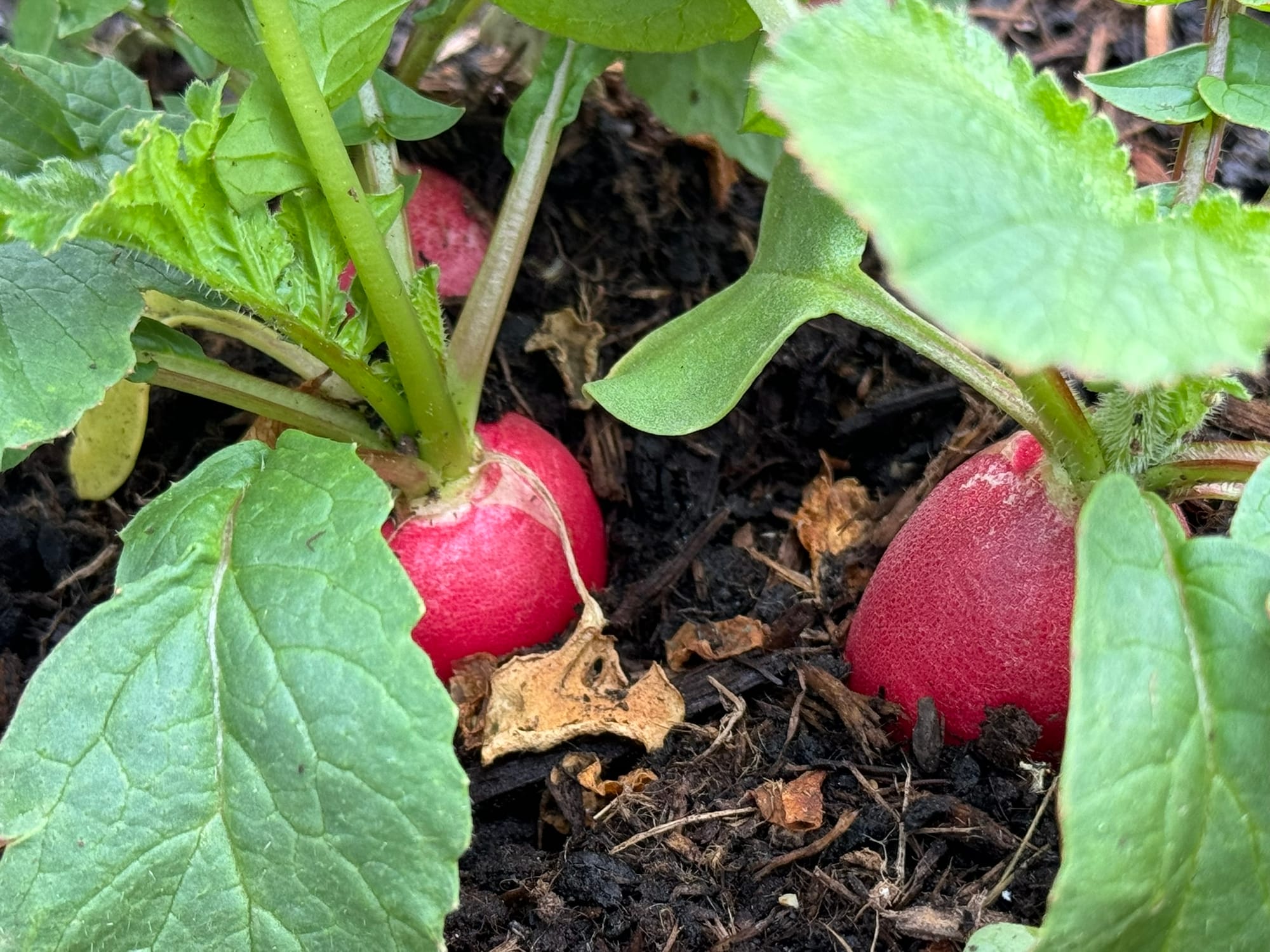
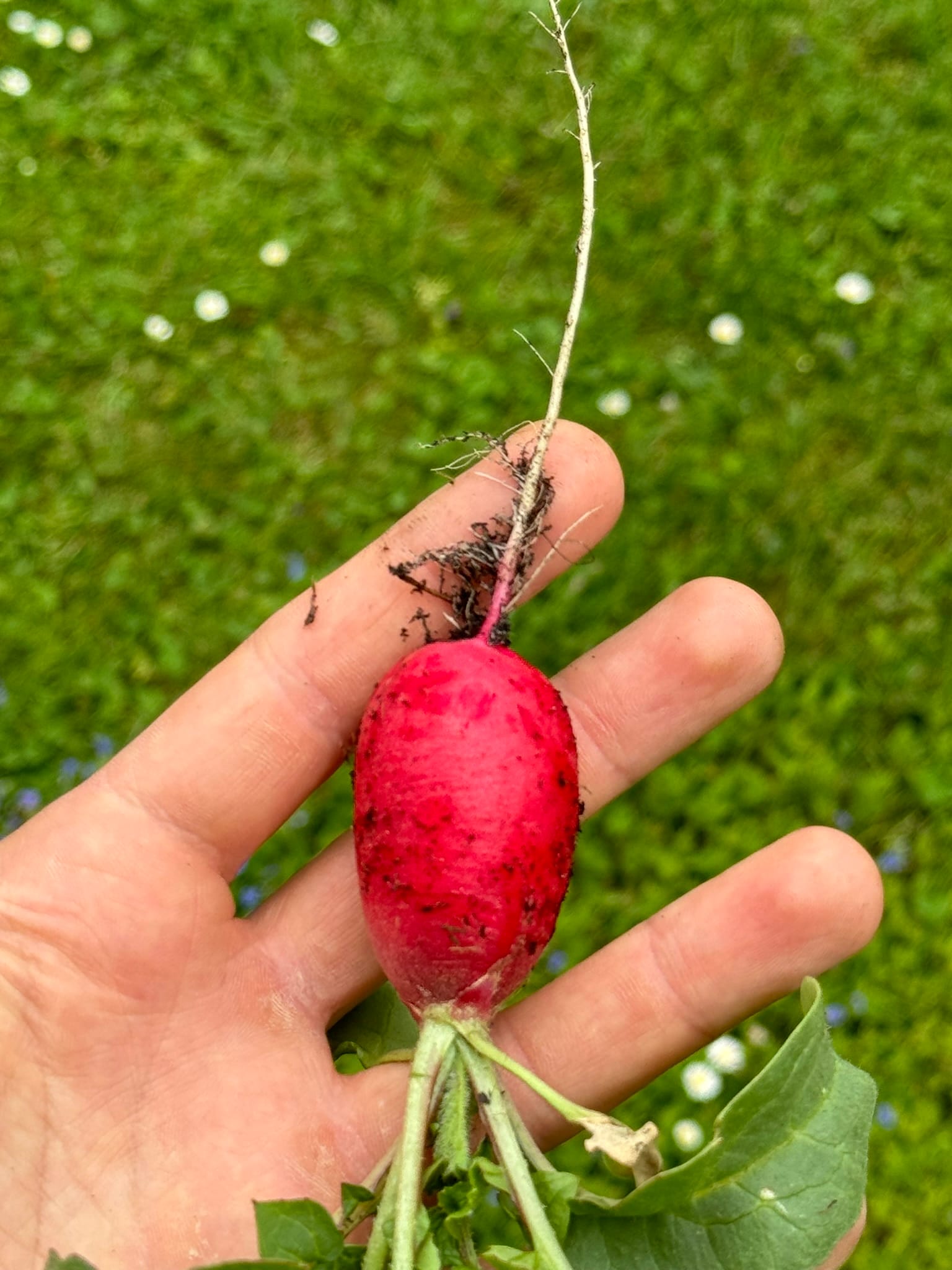

With that in mind, I’ve moved the pumpkins and melons out. I think I messed up the spacing a little bit and placed them too close, but there is a lot of space around the beds for them to grow.




As you can see, there is a net above both beds. We had multiple severe weather warnings this month with high chances of hailstorms, and my April paranoia got the better of me again, so I bought some hail protection nets. It’s totally redundant and overpriced, but I don’t want to lose any more plants due to the weather.

Just a side note here, we all probably know how great fresh radishes are and also how yucky they are on the second day. There is an easy solution for preserving the crunch: lacto-fermentation. Just stick washed and halved radishes into a salt brine of 5% concentration and wait for a few days to see the milky cloud inside. The radishes will also lose their red color. Remove the fermented radishes from the brine, put them into a mason jar, top up with some white wine vinegar, and call it a day. This will preserve them for many months, up to a year in your fridge.

The other raised beds are nicely filled with some onions. I already used a few of them for cooking and can’t wait for the real deal once they are done. The garlic will be done soon as well; the bottom leaves are already dying, and the stems are getting really thick. I hope it’s not just a decoy and bulbs are forming underground.

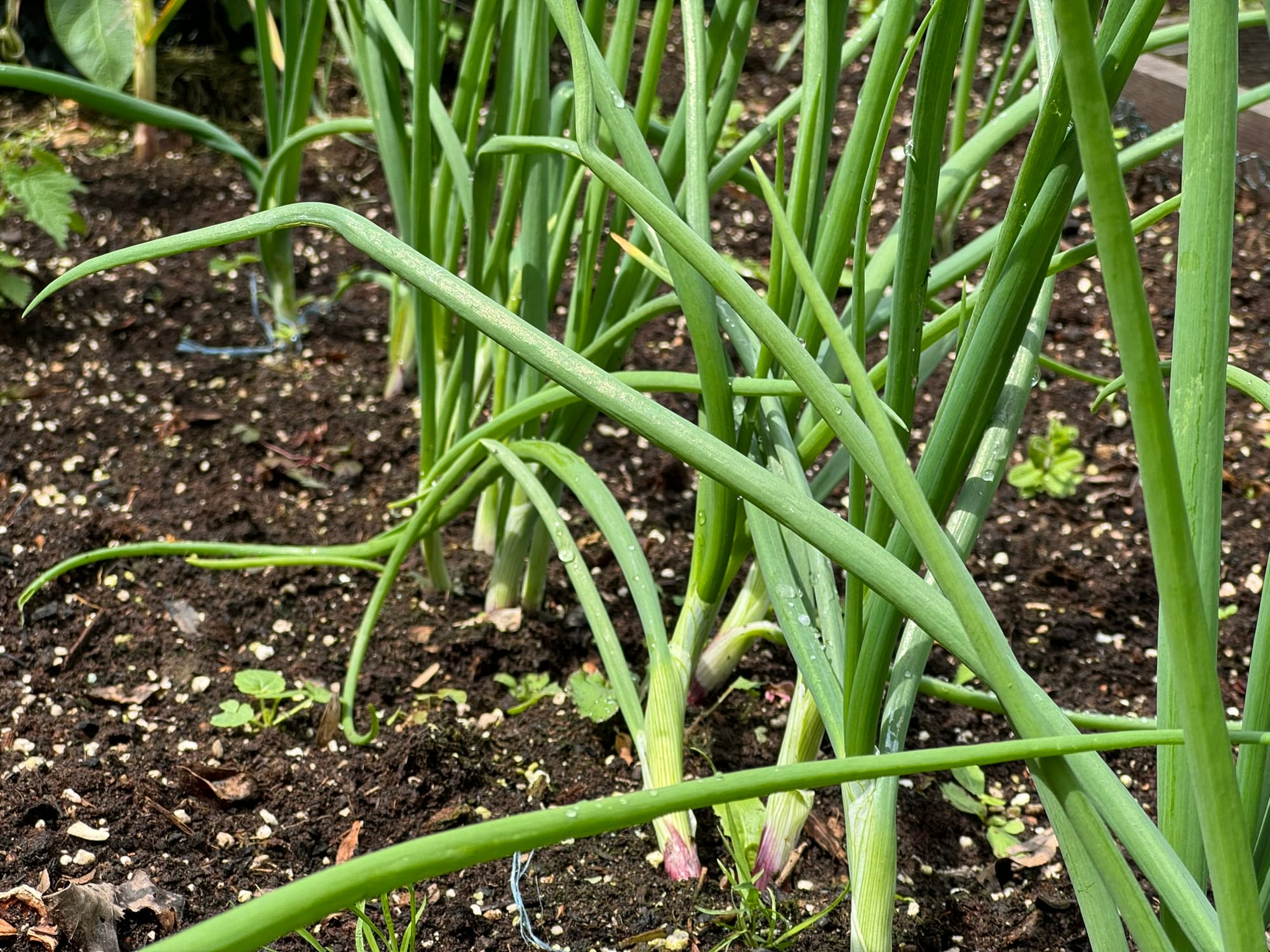
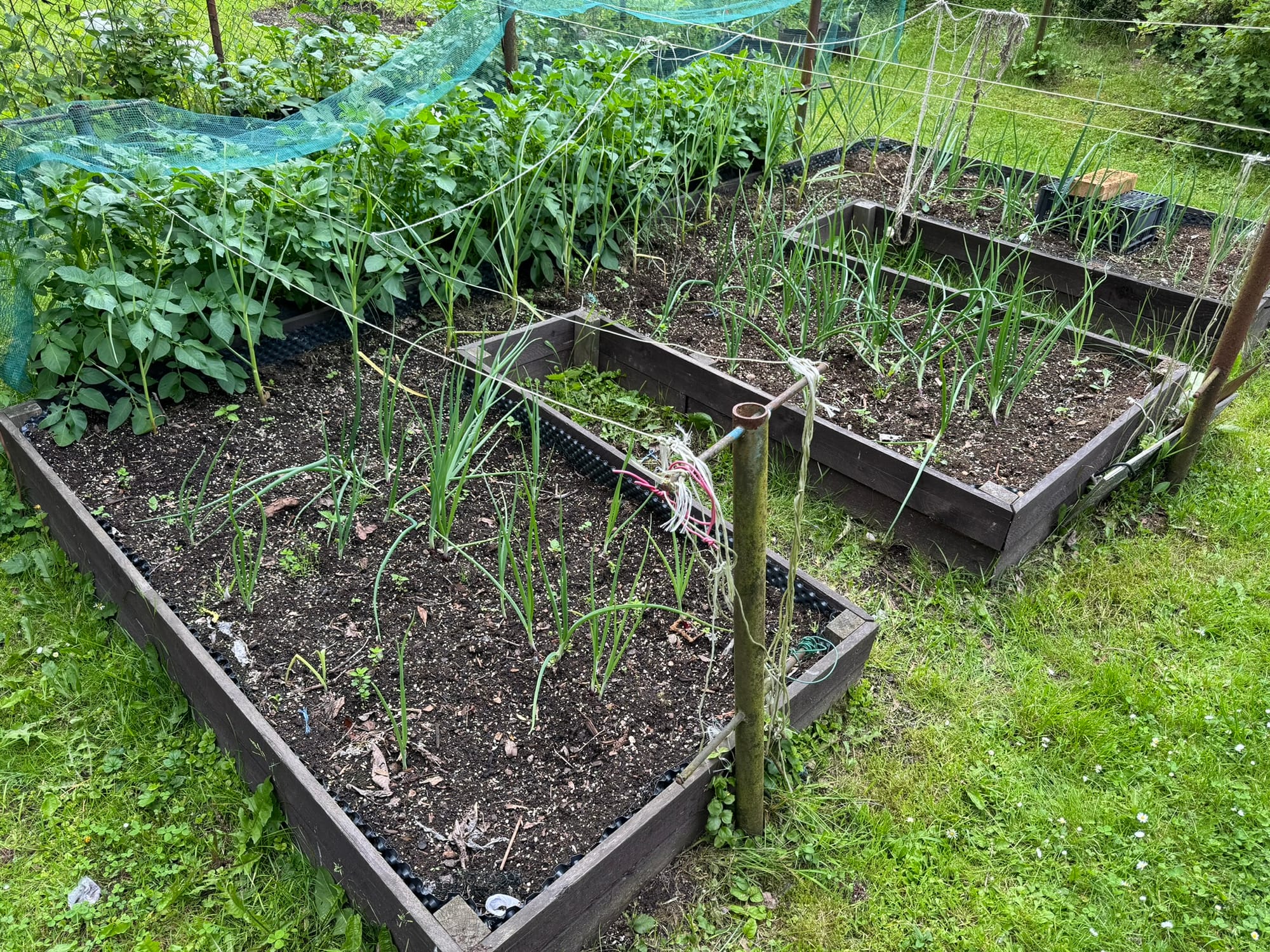
the Foraging
It might be a surprise for you city folks, living in the city center of the capital, but the stuff you buy has to grow somewhere. Most of the year it’s Spain for this part of Europe, but May is also the month when foraging starts for me. For example, the Black Elderberry, a bush that’s basically everywhere, yet you still pay 5 euros for half a liter of “homemade” drink with syrup from this abundant resource. It’s a very versatile plant. In May, we collect flowering tops to create a deep-fried snack or brew syrup out of them, and in late summer, we collect blackberries to make a jam. All this is from one plant that is growing near almost every house because it is believed to scare away bad spirits. I don’t believe that, but I’m glad someone did in the past.




Black Elderberry flowers. You can fry them or make a syrup!
Speaking of berries, our company offices have this nice, protected, and very sunny terrace on the rooftop. The architects actually used 110% of their brains and put a lot of planters with strawberry bushes there. Not just strawberries, but also currants, blackberries, raspberries, and a bunch of fruit trees. I have to give it to them; it’s a great idea. It’s a shame that people don’t care about these free and tasty strawberries just because it requires physical work to harvest them. I’m literally the only one picking them. I’m not complaining, though; I will make a jam out of them.

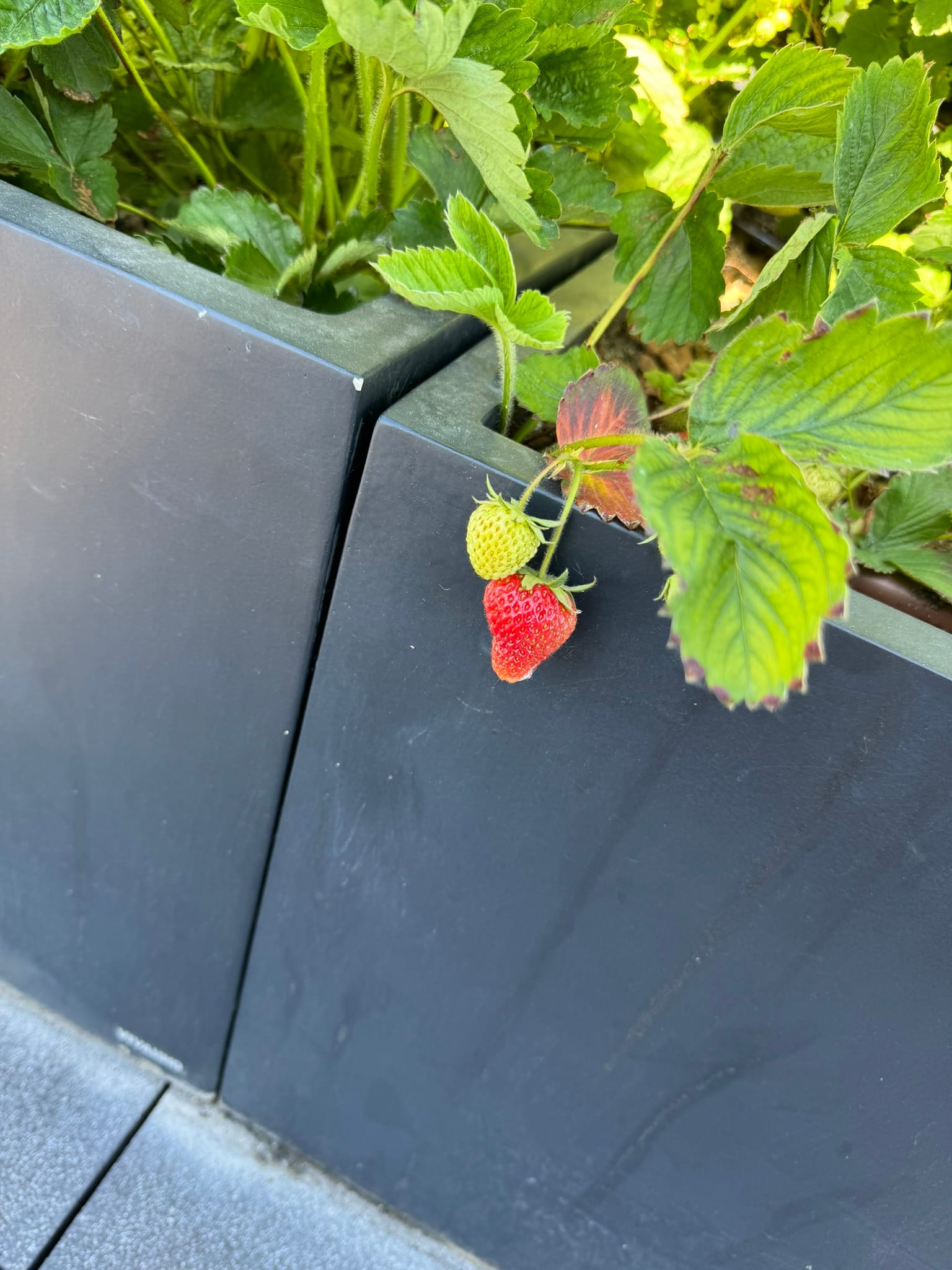

I put some strawberry implants into my raspberry field to overtake the ground. I don’t expect them to dominate this year, but I was quite surprised when I saw some red ones.


I’m a bit worried about the number of berries my gooseberry bush produced. On one hand, it’s a load of berries I can make syrup from or use as a filling for a sponge cake, but I have to constantly check for rotten ones and pluck them because I’m scared of powdery mildew that killed gooseberry trees like twenty years ago when my grandparents used to grow them. I will probably harvest some green ones as a pectin source for the strawberry jam. I’m not a huge fan of artificial gelatine commonly used instead.


the Main Crops
As I’ve already mentioned, the weather calmed down and returned to a somewhat sensible range of temperatures and amount of rainfall. My potatoes love this weather and are growing before my eyes. The early variety entered the last stage and will flower soon, hopefully, mid-June or early July, but I have to think about what will replace them. I also covered them with the hail protection net.






It just grows in front of your eyes.
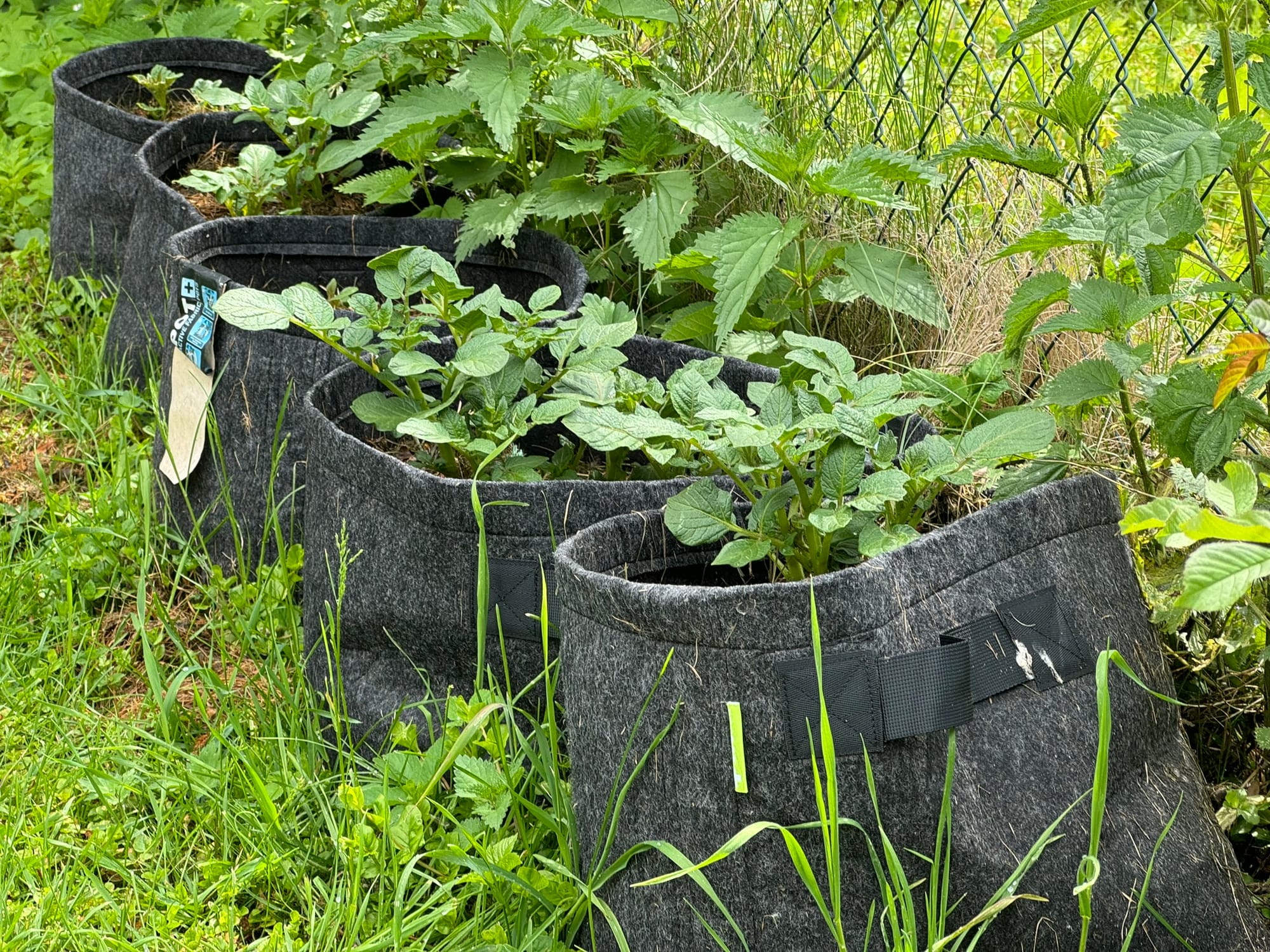


Time to ruin their day with some Ferramol.
Once the weather calmed down a bit at the beginning of the month, I started acclimatizing my tomatoes. I moved them into the greenhouse for a week to get used to chillier nights. This step is essential, but many people neglect this phase and put tomatoes or peppers directly outside. This won’t kill the plant but often stunts its growth because it has to deal with extreme sunshine and cold nights compared to the previous conditions.
Even though I managed to properly handle the light and ventilation for most of my tomato plants, especially the Stupicke early field, the Primabella, and especially Sunviva, were giving me a little bit of trouble showing signs of nutrient deficiency. I had to remedy it with some early fertilization, which is something I don’t like to do. Checking the internet for help, I discovered that I’m not the only one struggling with Sunviva. A lot of mature plants I found show similar issues, which bothers me even more.

I use a mix of 40:30:30 compost, peat moss, and perlite for the planters I grow tomatoes in and add two arbitrary-sized scoops of mycorrhiza spores. I leave it like this in the planter for a week before planting the tomato very deep. I also added some guano in the hole just to make the plant happy and immediately exposed to the nutrients. I’ve seen people using bone meal, chicken poop, or soaking the plant in liquid fertilizer before planting, but I never tried that. I’m afraid I will over-fertilize and kill the plant.




These are all indeterminate tomatoes, you have to pinch those shoots.
Where I am not afraid of liquid fertilizers are my hydroponic tomatoes. The seedlings I grew exclusively in cocopeat from the beginning turned out worse than I expected, and I’m not sure why. Maybe the mix of cocopeat and perlite was too compacted as I didn’t have enough perlite at the time. I’ve decided to scale down the original plan of having 12 hydroponic tomatoes to 8 for now, but I still have 4 plants; maybe I will add two more planters. Nonetheless, the 8 plants I have right now all eventually managed to come ahead of those in the soil. I am using a two-part fertilizer from Shogun mixed specifically for coco. In comparison with the tri-part TerraAquatica I use at home, the Shogun does very well with eyeballing. Equal parts of part A and part B and you’re good to go! From my experience, tomatoes will grow well in an EC anywhere from 1.3 to 3.0, and I plan to feed them heavily for the first month without giving them a break!

the Greenhouse
Right after those frosty days in April, I decided to move all my peppers outside because I needed the space at home for tomatoes. I was prepared for colder nights with some long-lasting candles to heat the insides, which I fortunately did not have to use. I’ve decided to keep 6 bell sweet peppers, 8 Tabasco peppers, 6 or 7 Habaneros, and 6 or 7 Nagabrains—26 out of 36 plants. The rest I’ve gifted to my friends and neighbors.


Some bell peppers are already producing fruits.
I’ve also planted 9 Red Robin tomatoes and 6 salad cucumbers. I don’t grow cucumbers from seeds because the seedlings take up a lot of space and the seeds are hard to harvest for the next season. It’s easier to buy them from a reputable supplier, not your local hobby market. I got mine from a local market that takes place in the square at this time.



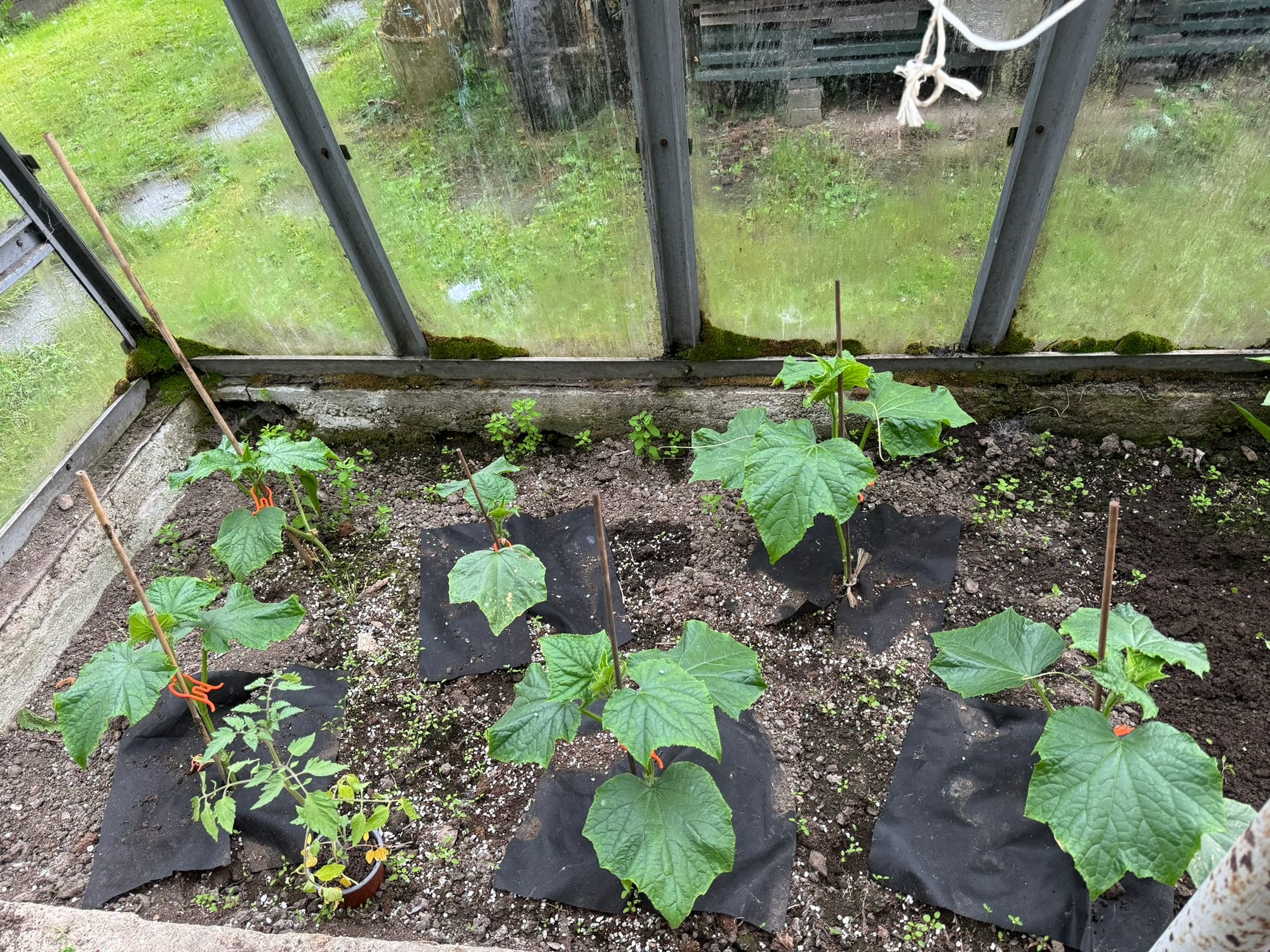

The other day, I was browsing my favorite shop for garden supplies and noticed a handy CO2 generator. These bags full of some white powder are used to increase the CO2 levels, which should promote more growth. I decided to buy it and place it in the greenhouse to see the effect. I hope it’s not snake oil, but I only have pictures from last year for comparison. It’s not very scientific because the weather and other conditions are vastly different, but it can give me some initial picture.


At home now, I am left only with my Micro-Tom tomatoes in my tiny greenhouse, ready for a time-lapse. I can’t wait to watch it in one month. I am also happy to see my indoor windowsills after approximately four months. I will utilize the space for my hydroponic experiment with a flood and drain system and radishes. But that’s a story to be told later.

Member discussion